“I’m a Student With No Regular Income –...
On her first ever holiday alone,...
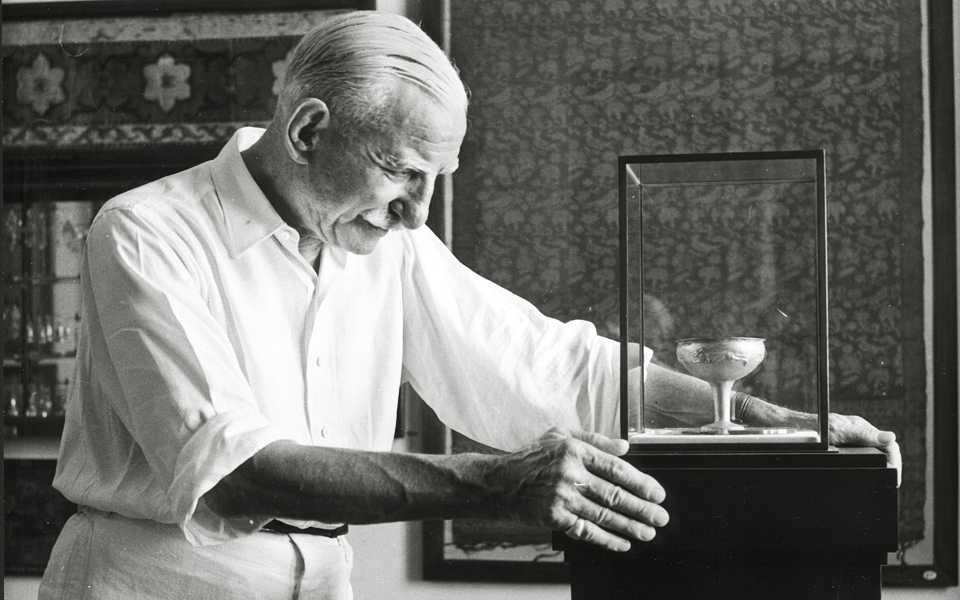
Antonis Benakis
examining the Mycenaean gold kylix from Dendra in the Argolid, in a phototgraph of emblematic significance for the museum, taken in 1950.
Tom Sawyer is always getting up to some mischief on the banks of the Mississippi River or engaging in crazy feats such as balancing on a fence to impress his sweetheart in the pages of Mark Twain. Victor Hugo’s Gavroche roams the streets of Paris, joining forces with Les Misérables in protest and penning scathing verses against the tyranny before falling in a hail of bullets… But Madcap Anthony – or Trelantonis, as the most popular childhood hero of modern Greek literature is known – need not be sought in books. Just walk down from Lycabettus Hill towards the National Garden and there, on Vassilissis Sofias Avenue, diagonally opposite the side entrance to Parliament, you will find the repository of his spirit in a 19th century mansion.
For all his mischievousness, the boisterous Trelantonis was known for hating lies and injustice. But this precocious and courageous pea-jacketed boy was not a figment of the imagination of his creator, Penelope Delta. He lived, traveled, fought and loved, from 1873 to 1954. He was Antonis Benakis, the founder and creative force – even to this day – behind one of Greece’s finest museums: the Benaki.
The small state formed in 1830 in the southern Balkans did not simply represent the ideal of a handful of visionaries who – initiated in the spirit of the Enlightenment – despised Ottoman domination. It was not even a vindication of the local population that took up arms against the hated pashas and sultans, shouting “Freedom or Death,” and decimated in the 10-year War of Independence.
New Greece saw itself as the embodiment of a tradition that went back thousands of years, picking up the thread of its interrupted history from the rhapsodists who sang of the Siege of Troy; the thread Ariadne gave Theseus to help him escape from the clutches of the Minotaur…
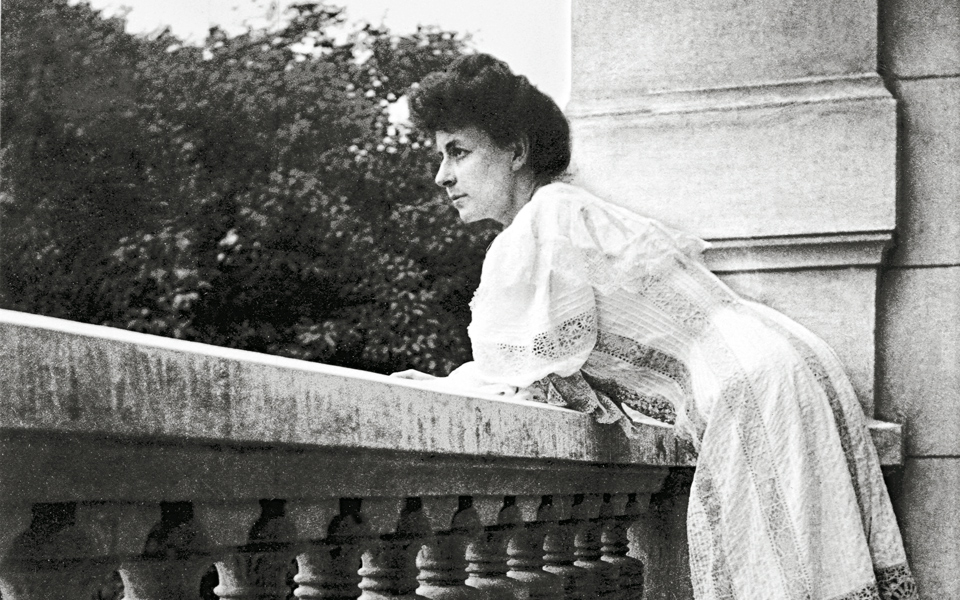
Penelope Delta, the sister of Antonis Benakis and one of the greatest Greek writers of her generation. She was born in Alexandria, Egypt, in 1874 and died in Athens in 1941.
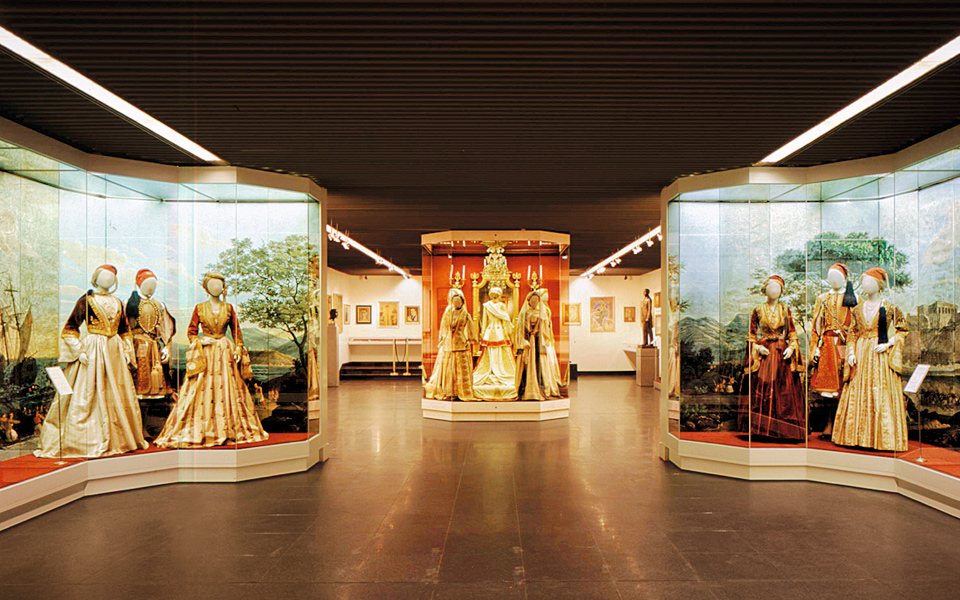
Exhibition hall with traditional costumes from various regions of Greece.
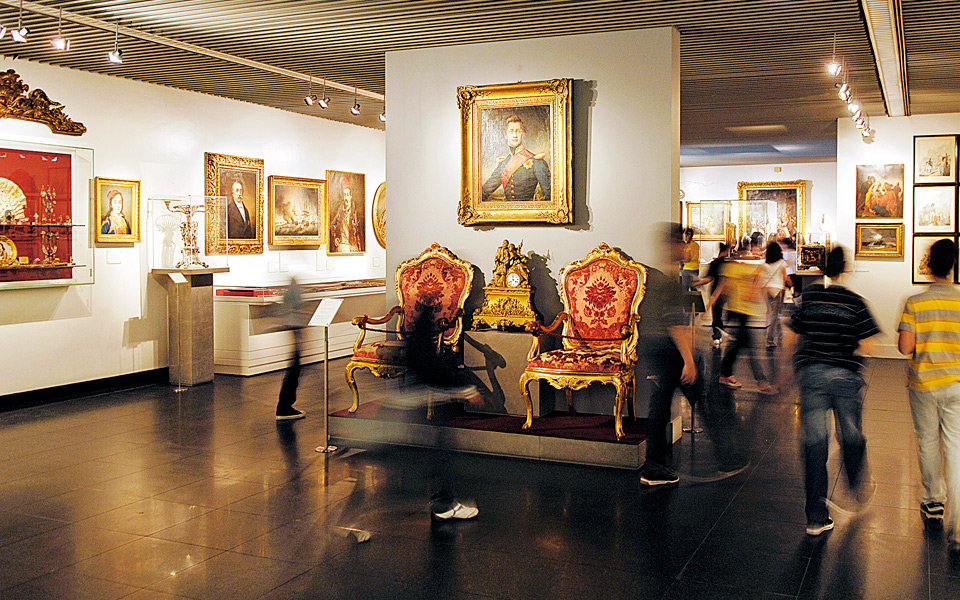
A hall dedicated to the reign of King Otto, including a portrait of the Bavarian monarch of Greece at a young age
The continuity, the resilience of Hellenism through the centuries, was certainly not founded in heredity, the DNA. Nor was it personified by some royal dynasty. What survived in spite of all the death and rebirth were language, art and a sense of place. Or, as so aptly put by the poet Odysseas Elytis: “My only care my language on Homer’s shores.”
From the collapse of the Byzantine Empire or thereabouts and to the present day, communities of diaspora Greeks have been striving, surviving and doing great things, nowadays mainly in America and Australia; back then in Egypt, Constantinople, Russia and the Danubian Principalities.
The Benaki family, an economic force in Alexandria, came to Athens not to invest but to endow the country-birthplace with its wealth. Its patriarch, Emmanouil Benakis, threw his significant weight behind the father of modern Greece, Eleftherios Venizelos, thanks to whom the country expanded three times in size and five in population, and was impressively propelled into the modern 20th century.
His daughter, Penelope Delta, became one of the most emblematic writers of her time. His son, Antonis, succeeded, among his many endeavors, in convincing his siblings to give over the family mansion to the creation of a museum, which he nurtured and grew throughout his lifetime.
What is the guiding principle of the Benaki Museum? The propagation of the Greek language and art as it evolved not just within the confines of the country’s borders but throughout the Eastern Mediterranean.
“The pea-jacketed boy was not a figment of the imagination of his creator, Penelope Delta. He lived, traveled, fought and loved, from 1873 to 1954.”
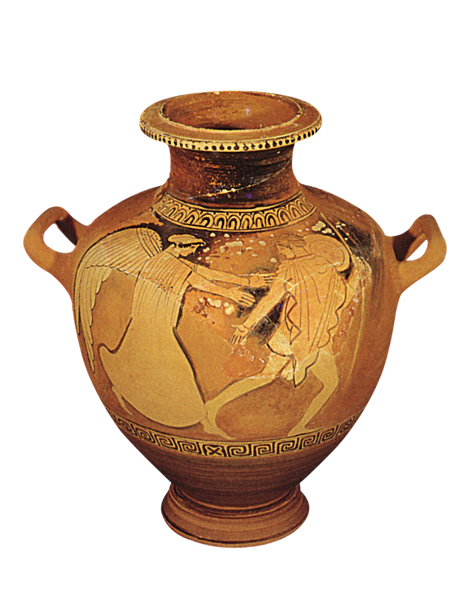
Attic red-figure hydria by the Syracuse Painter, depicting Eos pursuing Cephalus, 470-460 BC.
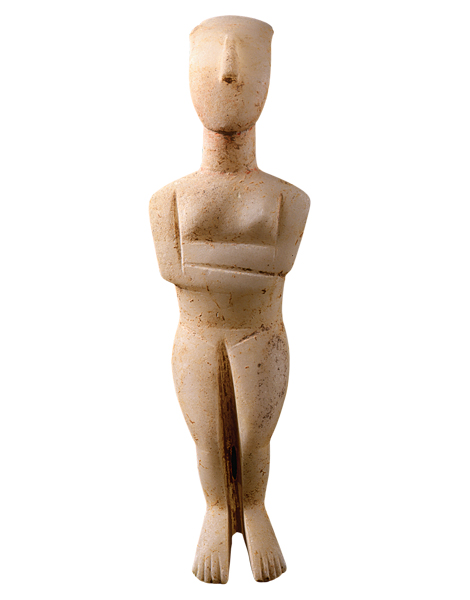
Early Cycladic marble female ‘folded-arm’ figurine. Early Cycladic II period, 2600-2500 BC. The figurine, belonging to the Spedos variety, has been attributed to the so-called Fitzwilliam Museum Master. Height 0.21m. Gift of Chris Bastis. (Prehistoric, Ancient Greek and Roman Art)
Through the gate, across the garden, up the marble steps, brings you to the museum’s ground floor and immerses you in the long-distant past. Cycladic figurines and miniatures of female deities whose enlarged breasts denote a matriarchal period of human history. Spearheads, grave offerings and funerary steles dedicated to warriors and maidens. Objects of day-to-day use – reminders that ancient times were not inhabited just by poets and philosophers, but also by simple folk who knew how to enjoy and beautify their lives – such as children’s toys, jewelry, cups and cookware. Coins depicting hegemons and illustrating the skill of their craftsmen. A whole world opens up as you wander from room to room. A sculpted head from Afghanistan marks the outer border of Alexander the Great’s sphere of conquest and an epigraph from Phrygia proves the reach of Greek: “Our Common Greek Language / which we carried as far as Bactria, as far as the Indians,” as C.P. Cavafy puts it.
In the next room we see a pre-Christian stamp used to sanctify bread in Egypt; an ivory comb engraved with the figures of two beautiful women embodying the two queens of the time, Rome and Constantinople; icons of the Virgin holding or kissing the infant Jesus on wood, cloth and papyrus, and we wonder: how many tears are soaked into these materials? The next cases hold icons of the warrior saints: George, Demetrius, Archangel Michael, reincarnations we could almost say, with their curled locks and swords, of Achilles, Patroclus and Hector.
The first floor contains what is probably the museum’s most exciting exhibit: young Domenikos Theotokopoulos, before he left his birthplace of Crete for the West, before he became El Greco, paints the Apostle Luke painting the Virgin Mary – an image within an image, a destiny within a destiny.
In the meantime, the Ottomans are sweeping through the Eastern Mediterranean, tolerant of the different religions and customs under their dominion, so long as taxes are paid and the Sublime Porte worshipped.
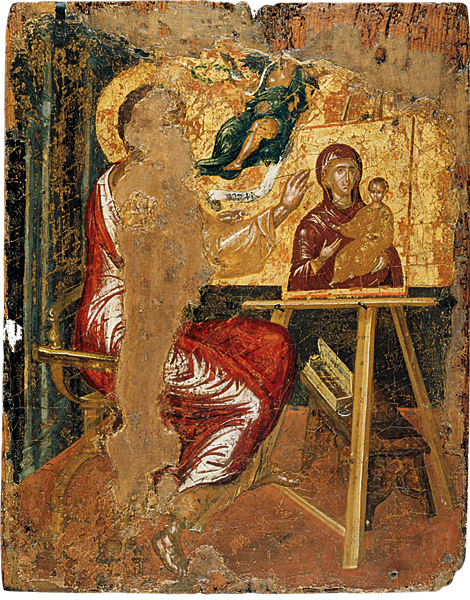
Domenikos Theotokopoulos, St Luke painting the Virgin and Child. Egg tempera on wood, pre-1567.
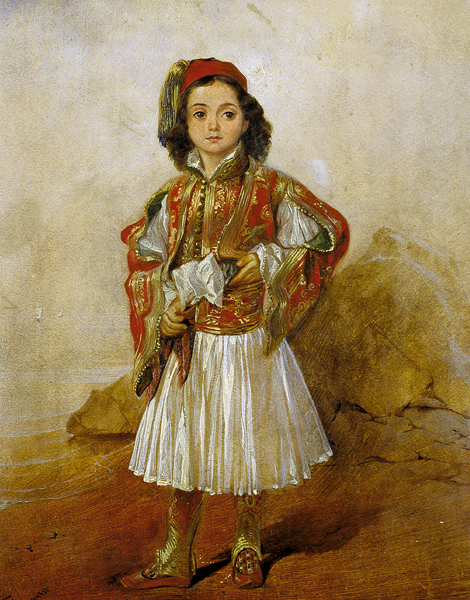
A Young Greek Boy, 1837. Oil painting, gift of Damianos Kyriazis. The artist remains unknown, but this portrait radiates a peculiar feeling of resignation and intangible sadness, which only an exceptionally sensitive individual could perceive.
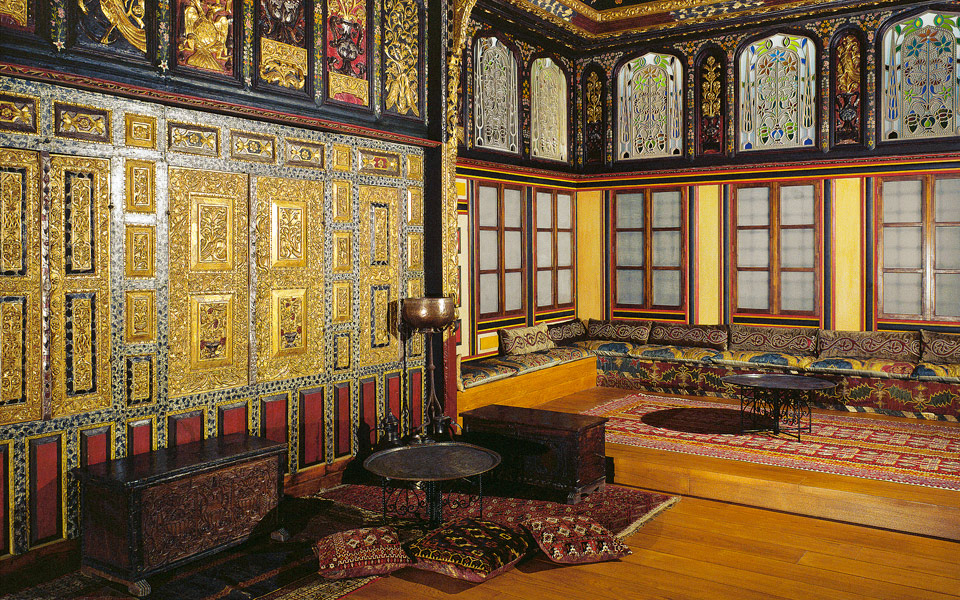
The splendid reception room of a mid-18th century mansion in Kozani, with splendidly carved wood panels lining the walls and other impressive ornamentation.
In the Aegean, the Peloponnese and Epirus, Christians wore colorful dress to marry and the girls wove their dowries on a loom. The bridal bed was ensconced behind an embroidered curtain, or sperveri, away from prying eyes in homes inhabited not by single families, but entire clans. Rooms from two such homes, mansions, are reconstructed at the Benaki: one from the Macedonian town of Kozani with ornate, engraved wood walls, and the other from Siatista, with a ceiling done in gold trim and resplendent with Byzantine and other eastern motifs.
The upper floors of the museum are dedicated to the emancipation of Greece through the War of Independence that began in 1821. Here we see the prophets and warriors of modern Greece, their swords and guns, and the wills they wrote minutes before dying on the battlefield. We see the sheet music for the National Anthem and witness the assassination – in the throes of civil strife – of Ioannis Kapodistrias, as well as the first Greek Constitution ceded by King Otto in the wake of popular revolt. There are manuscripts in the hand of the visionary poet Angelos Sikelianos, the Greek grandson one might say of Lord Byron, and C.P. Cavafy, as well as Greece’s two Nobel Prizes: Seferis’ and Elytis’. Some of the greatest Greek painters are also represented here: Yannis Tsarouchis, Nikos Hadjikyriakos-Ghikas (who has donated his studio to the museum), Photis Kontoglou, Panagiotis Tetsis, etc.
The Benaki also includes what I surmise is the Greek Spring of the 60s, paying homage to Maria Callas, Dimitris Mitropoulos, Manos Hadjidakis and Mikis Theodorakis, making room for Oscars won by Greeks and reaching all the way to the 2004 Olympics, which began in Athens with the exaltation of Cycladic idols – the same idols on display as you first enter the museum.
Trelantonis was right: In the Eastern Mediterranean – as in the world over – the One is the All (en to pan), or as a modern folk tune has it: “everything is blended so sweetly.”
* Christos Chomenidis is one of the country’s most popular contemporary authors and an Athenian born and bred.
Benaki Museum, 1 Koumbari & Vassilissis Sofias
• Tel. (+30) 210.367.1000 • Email
• Open: Wed & Fri 9:00-17:00, Thur & Sat 9:00-24:00, Sun 9:00-15:00, closed Mon & Tue
On her first ever holiday alone,...
Between Strefi and Lycabettus Hills, Neapoli...
Six Athenians tell us about their...
Mimosa shrubs and sweet acacia and...